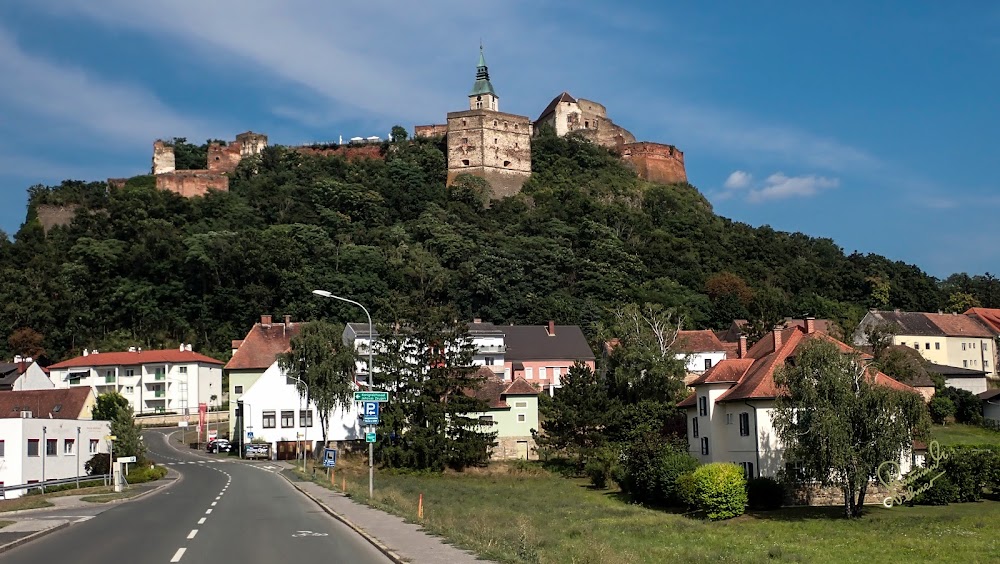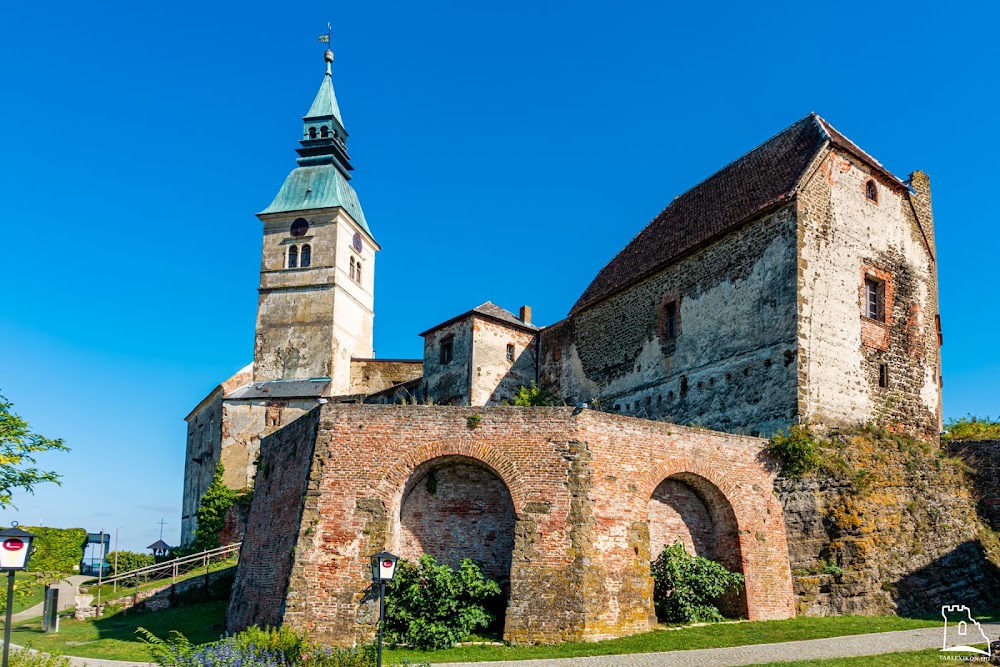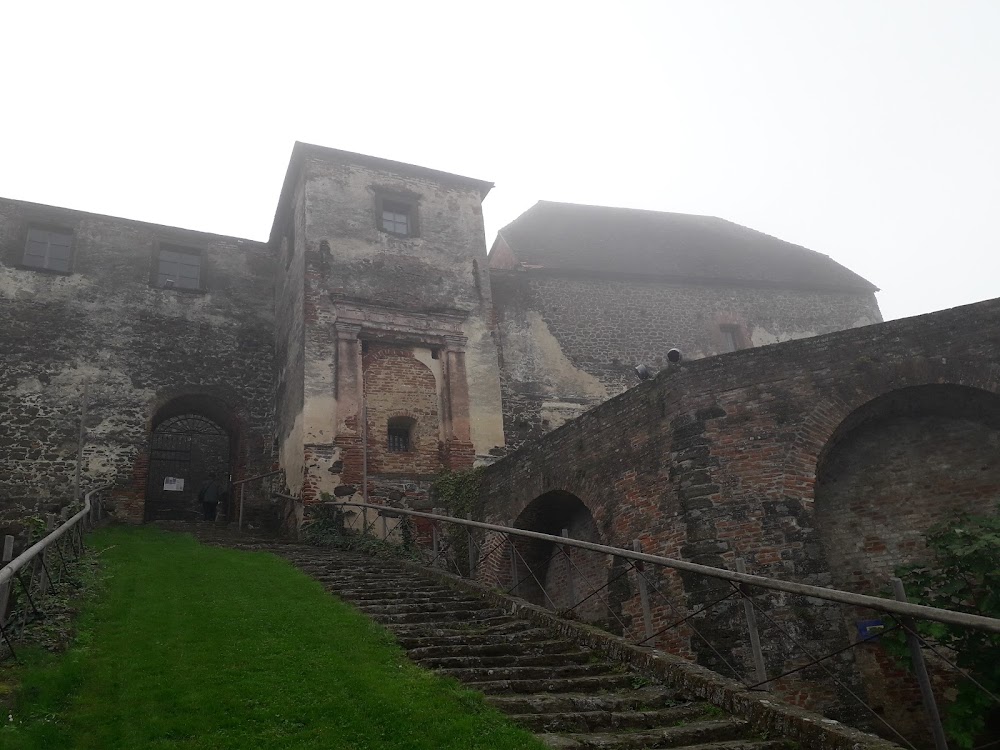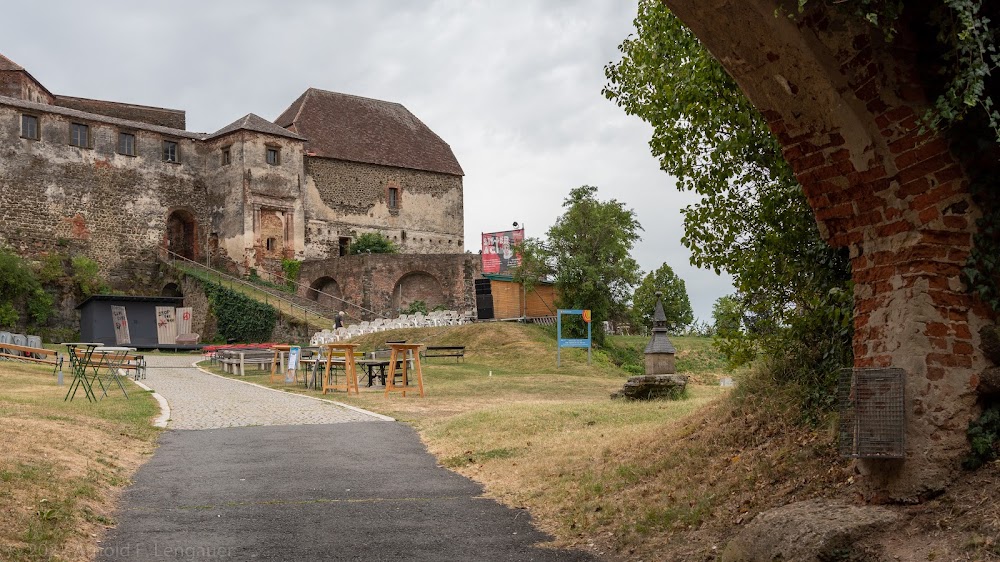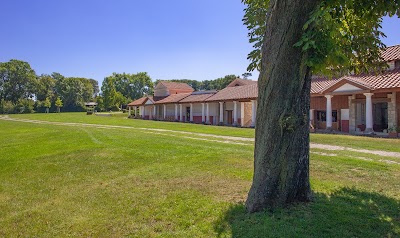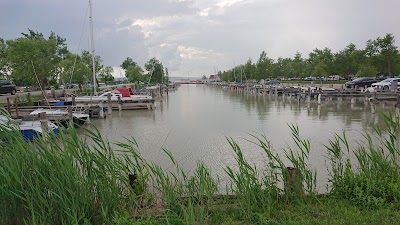Burg Güssing (Burg Güssing)
Overview
Güssing Castle, nestled in the charming city of Burgenland, Austria, is a historical fortress steeped in a rich heritage that dates back to medieval times. Perched atop a volcanic cone, the castle commands breathtaking views of the surrounding plains and lush forests, underscoring its strategic significance in the region.
Historical Origins
The origins of Güssing Castle can be traced back to 1157 when Count Wolfer constructed it as a defensive stronghold on the volcanic hill. This natural vantage point provided an ideal location for a fortress. Initially built using timber—an abundant resource at the time—the wooden castle effectively protected the region from invasions and established control over the surrounding land.
Transition to Stone
As the threat of invasions intensified, there arose a pressing need for stronger defenses. Consequently, in the late 13th and into the 14th century, the wooden structure was replaced with a more formidable stone castle. This transformation resulted in thick walls, fortified towers, and a grand keep, enhancing its defensive capabilities and establishing Güssing Castle as a significant military stronghold.
Power Struggles and Renovations
Throughout its history, Güssing Castle became a focal point of power struggles and conflicts, changing hands multiple times among various noble families. The Renaissance period brought notable enhancements, including the addition of comfortable living quarters and elegant architectural elements. These improvements not only bolstered the castle's defenses but also transformed it into a more hospitable residence.
The Batthyány Family Era
One of the most notable chapters in the castle's history unfolded during the 16th and 17th centuries under the ownership of the influential Batthyány family. This noble clan played a crucial role in regional politics and in defending the Austrian-Hungarian border against Ottoman invasions. Under their stewardship, Güssing Castle underwent significant fortification, including the installation of cannons and the construction of additional defensive walls and bastions, ensuring its resilience against sieges.
Cultural Flourishing
Beyond military enhancements, the Batthyány family also focused on enriching the cultural and artistic landscape of Güssing Castle. They curated art collections, developed beautiful gardens, and hosted events that contributed to a vibrant cultural renaissance in the region.
Transition to Leisure
By the 18th century, as the Ottoman threat waned and warfare evolved, the castle's military significance diminished. Güssing Castle gradually transitioned from a military fortress to a leisurely residence and administrative center, adapting to the changing times.
Restoration and Preservation
The 19th century saw Güssing Castle facing neglect and disrepair. However, early in the 20th century, dedicated preservation efforts began, restoring this historic gem's structural integrity and authenticity. By the mid-20th century, the castle emerged as a cultural monument, attracting visitors and historians eager to explore Austria's medieval and Renaissance heritage.
Visitor Experience Today
Today, Güssing Castle stands as a remarkable testament to the architectural and historical legacy of Burgenland, Austria. Visitors can wander through its well-preserved fortifications, admire the beautiful Renaissance-style living quarters, and explore a museum that showcases artifacts from various periods of the castle's history. The stunning panoramic views from the castle continue to remind us of its former strategic importance.
Güssing Castle is not merely a historical monument; it is a vibrant tribute to the region's rich past, reflecting the resilience and ingenuity of those who built and preserved it. Whether you're a history enthusiast or simply seeking a picturesque destination, Güssing Castle offers an unforgettable experience.


